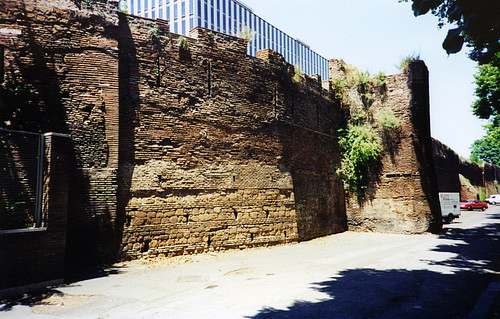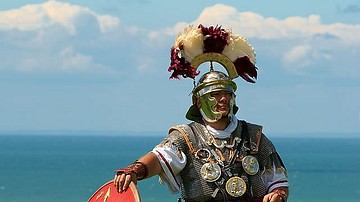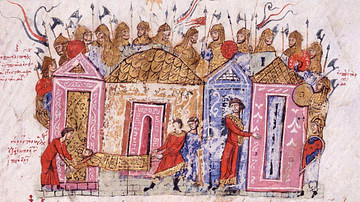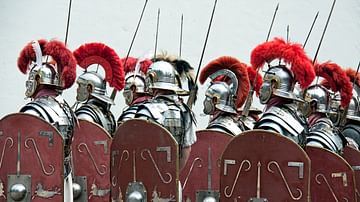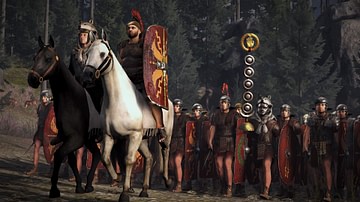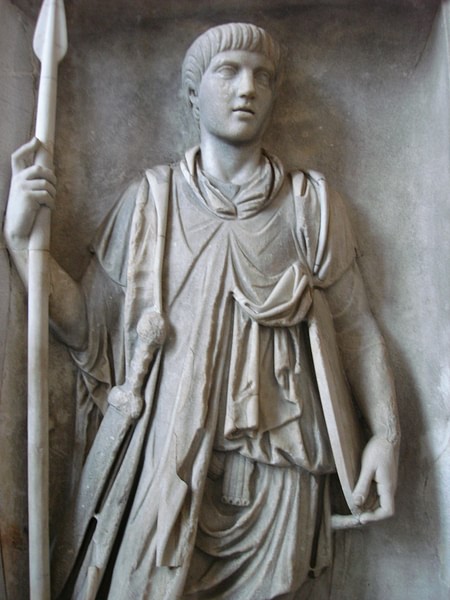
The Praetorian Guard (cohortes praetoriae) was, in the Roman Republic, a commander's personal bodyguard and then, in the imperial period, an elite force assigned to protect the emperor and Rome. Over the years, the guard would become a dangerous threat to imperial power and emperors were forced to gain its favour in order to ensure their reign. In the 1st and 2nd century CE many an emperor was murdered with Praetorian Guard involvement, and once one of their number, Macrinus, was even declared emperor. The body specifically created to protect the emperor's person had become his greatest liability.
Evolution
In the Republican period, the Praetorians were a small escort which protected an army commander, general, or governor. Their name derives from the commander's tent, a praetorium. This small force grew in number during Rome's civil wars with each leader having a large personal bodyguard. Rome's first emperor Augustus went a step further and, in 27 BCE, created a permanent bodyguard of nine cohorts totalling at least 4,500 men to protect himself and the royal family, the Praetorian Guard. This was in addition to the small band of, mostly Germanic, bodyguards he and many of his successor employed.
In 2 BCE Augustus appointed two Prefects (praefectus praetorio) to command the Praetorian Guard with both directly responsible to the emperor. Curiously, they were the only men allowed to carry a sword in the emperor's presence. Over time these Prefects, possessing the highest equestrian rank, were made members of the emperor's advisory council and even acquired some judicial, financial, and army logistics functions. They also increased in number with five in place during the reign of Constantine I.
During the reign of Tiberius, Augustus' successor, the Guard was expanded to 12 cohorts. Vitellius (r. 69 CE) expanded it again by adding some of his Rhine army so that the Guard now had sixteen 1,000-man cohorts. Domitian (r. 81-96 CE) then reduced the number to ten 1,000-man cohorts, each commanded by a tribune. Units of 100 men were commanded by a centurion, the most senior of which was the trecenarius.
A cavalry wing was added, too, the equites singulares Augusti, which consisted of first 500 horses and then later 1,000. Increasingly, from the 2nd century CE, the Praetorian Guard were used as a useful army reserve and they often took to the field of battle, aiding their emperor defend the empire or their candidate of emperor-to-be achieve his goal. In the field, a Praetorian Prefect would be second-in-command if the emperor were present or sole commander if not.
Privileges
Members of the Guard were given particular privileges indicated on a diploma signed by the emperor. Prior to 13 BCE, they served for 12 years while legionaries served 20 then; after reforms in 5 CE, Praetorians served for 16 and legionaries 25 years. The Guards also enjoyed over three times the pay given to ordinary legionaries. Their higher status was clearly signified when Augustus left each member 1,000 sestertii in his will compared to the 300 a legionary received. The Praetorians were also distinguished by their finer armour and oval shield, as opposed to the rectangular shield of other legions. They had their own standard when in battle, probably an eagle and wreath. As they served for a shorter period, Praetorian Guards were able to pursue higher military commands at a younger age, once discharged. They were also given other privileges by various emperors such as tax immunity by Vespasian on the land given at the end of their service.
Camps
Praetorian Guards largely came from either Italy or the fully-Romanised provinces to better ensure their loyalty. Three cohorts were stationed in Rome, and the rest remained in towns around the capital. This, and the avoidance of full uniform (but still carrying weapons) for those in Rome, was probably because of the Republican tradition that no commander's army should enter the city. However, this situation changed in 23 CE when the Prefect Aelius Sejanus convinced Tiberius to permit the Guard to camp as a single unit in the castra praetoria in the north-eastern suburbs of Rome. Under Aurelian (r. 270-275 CE) the camp became part of the city's fortification walls and its remains can still be seen today. The argument for a single camp was that if the Guard were all stationed together, then they would be better able to respond to an emergency, control any disturbances in the city, or simply act as a deterrent to any would-be conspirators. Whenever the emperor went on campaign in person, a detachment of the Praetorian Guard, led by one of the prefects, went with him.
Power & Influence
As the imperial throne wobbled with ever-increasing intrigues the Praetorian Guard became an important factor in plots to usurp the emperor's position. In 41 CE Claudius, after the murder of his predecessor Gaius (Caligula) by the Praetorian Guard (whose officers had been humiliated by him), sweetened the Guard by handing out large cash sums – 15,000 sestertii per man. Just to reinforce the relationship, Claudius then had a series of coins minted which depicted the Guard hailing him as emperor. Thereafter, every new emperor was careful to give the Guard a lump sum and the honour of an imperial address even if the Guard never actually held a formal position in the empire's power structure or possessed any political leadership of any note. When the Praetorian Guard backed Otho against Vitellius in 69 CE and lost, the latter widened up recruitment to allow the best veterans from any legion to join. Vespasian attempted to ensure their greater loyalty by a different means, making his son, the future emperor Titus, a Praetorian Prefect.
By the time of Commodus in the late 2nd century CE the Guard had become an ill-disciplined liability. In 193 CE they murdered Pertinax - he had, after all, only offered them a paltry 12,000 sestertii each on his accession - and then gave their allegiance to anyone who could pay them enough, the winner being Didius Julianus. Didius offered to pay the enormous sum of 25,000 sestertii to every Guard member, the equivalent of 5-year's pay, and when he was made emperor actually upped the reward to 30,000 per man. This dwarfed the 20,000 sestertii that Marcus Aurelius had given to each member when he had become emperor, although this was a genuine gift and not a bribe.
The power of the Praetorian Guard led to emperor Septimius Severus replacing the most notorious members with loyal legionaries from his Danube armies. Still, the Praetorian Guard would not go away as a powerful instrument of power, and in 217 CE, Macrinus, a praefectus praetorio, arranged the assassination of Caracalla and was declared emperor by his own men. Finally, Constantine I disbanded the Praetorian Guard in 312 CE after they had backed his rival Maxentius. The Praetorian Prefects would survive, though, as by now they had become important administrators of the regions of the East, Gaul, Illyricum, and Italy, a role they would continue to perform into the Byzantine period.
